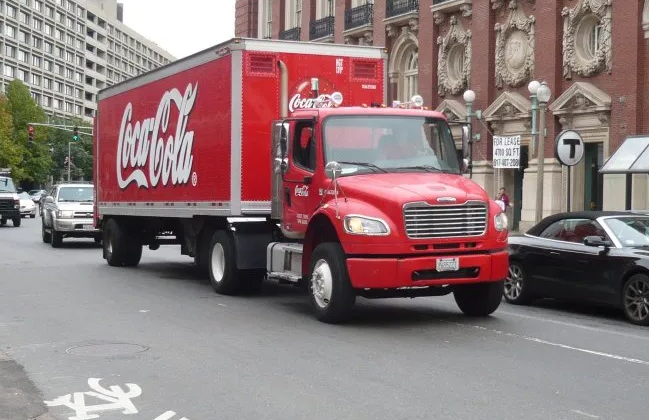Curb space is the Wild West of neighborhood transportation, a 24-hour battle pitting delivery vans, big trucks serving the internet economy and app-based taxis like Uber and Lyft against entitled car owners as they all seek a narrow slice of asphalt.
But cities are finally recognizing that in order to keep streets safe and ensure a smooth traffic flow they must understand who is using their curbside space and manage it — perhaps even by pricing it — accordingly.
Thanks to a new grant from Transportation for America, city leaders in Boston, Minneapolis, and Bellevue, Wash. will run pilot programs to regulate curb space, starting in February. Another 10 partner cities could join the effort implementing loading zone programs of their own once the pilot gets going.
"Most of them have a rather recent understanding [of the demands at] the curb and they want to get an understanding of how to balance all the demands," Transportation for America director Beth Osborne, who is running the program, told Streetsblog. "A lot of curbs have most demand are in urban core where traffic doesn’t move. We're trying to figure out ways to make space for garbage pick-up, freight, and drainage."
For the pilots, each city will experiment with its own changes at the curbside for about a year. These measures will attempt to balance the needs of taxis, food distributors, and parcel delivery services while taming scofflaw drivers from parking in commercial spaces or, perhaps, eliminating free parking to discourage private vehicle storage. That could mean installing a reservation system for a periodic block of time for deliveries, limiting access of commercial vehicles to loading zones at particular times of the day, adding new signage, and redesigning street space with paint and bollards — although it would only be for a small number of streets at first.
Boston for example is already designating pick-up and drop-off zones in another curb pilot for ride share companies on Boylston Street in the Fenway after similar programs in Cambridge and Somerville.
"I am encouraged that several of our recent efforts, such as piloting pick-up and drop-off space for rideshares and implementing performance parking, proved Boston's willingness to find innovative solutions to our transportation challenges and helped to secure our participation in this joint effort," Boston Mayor Martin Walsh said in a statement.
Even though each city came in with different ideas for what it wants to do, the cities had similar goals of reducing crashes, support alternative transportation modes, ensuring people have access to jobs and services, and lowering greenhouse gas emissions.
Transportation officials will work out the specifics of the scope of the pilots in the next four to six weeks with an eye toward collecting data on which delivery services use curbs, how frequently, and at which times.
"There’s multiple demands on the curb from average traveler that often conflicts with getting deliveries to stores and retail," Osborne said. "Smaller retail establishments need more deliveries than big national chains and I’ve heard some delivery companies say their profit is high enough that they meet delivery deadlines that it’s worth paying penalties."
The pilot underscores longstanding conflicts at the curb that have only grown worse this decade thanks to the rise in ride hail companies and delivery services. Uber and Lyft are traveling more miles on city streets than they were a decade ago, gumming up traffic in desirable downtown neighborhoods while picking up and dropping off passengers. The rise of e-commerce giants like Amazon and eBay has funneled packages into USPS, UPS, FedEx, and other trucks that barrel down local streets and deliver these wares throughout the day.
Meanwhile household car ownership has increased in many cities over the same period, adding even more vehicular traffic through residential neighborhoods that are suddenly besieged by large SUVs, commercial minivans, and tractor trailers whenever people step outside.
Cities hope the policies will eventually prevent trucks and passenger vehicles from double parking in the street or circling the block looking in order to drop off cargo. That's what happened in Washington D.C. when the city launched an app-based reservation pilot with curbFlow for curbside deliveries for a three-month period this year. The app helped lower double parking near reserved curbs by 64 percent and there were no traffic injuries at those sites.
Whatever the cities do, there will likely be some adjustment period based on feedback from the public. Osborne has found the public can be reticent to a permanent change and far more welcoming to a limited pilot.
"Permanent change can be very threatening because people don’t think about rearranging built environment in their heads whereas pilots allow them to interact with the new system and use it in different circumstances," she said. "They can be a very powerful tool for getting people to do things differently."






